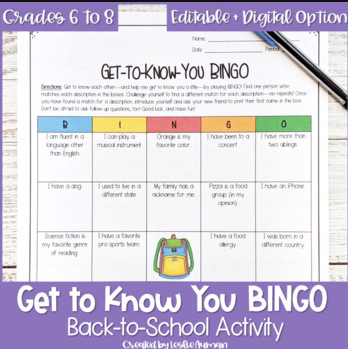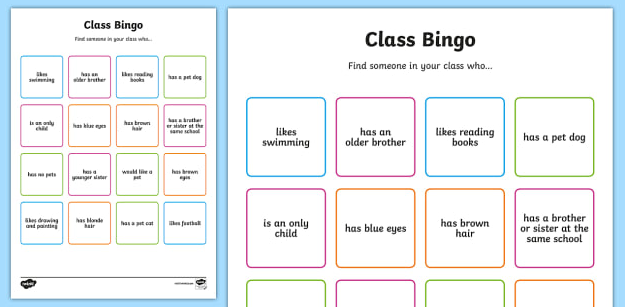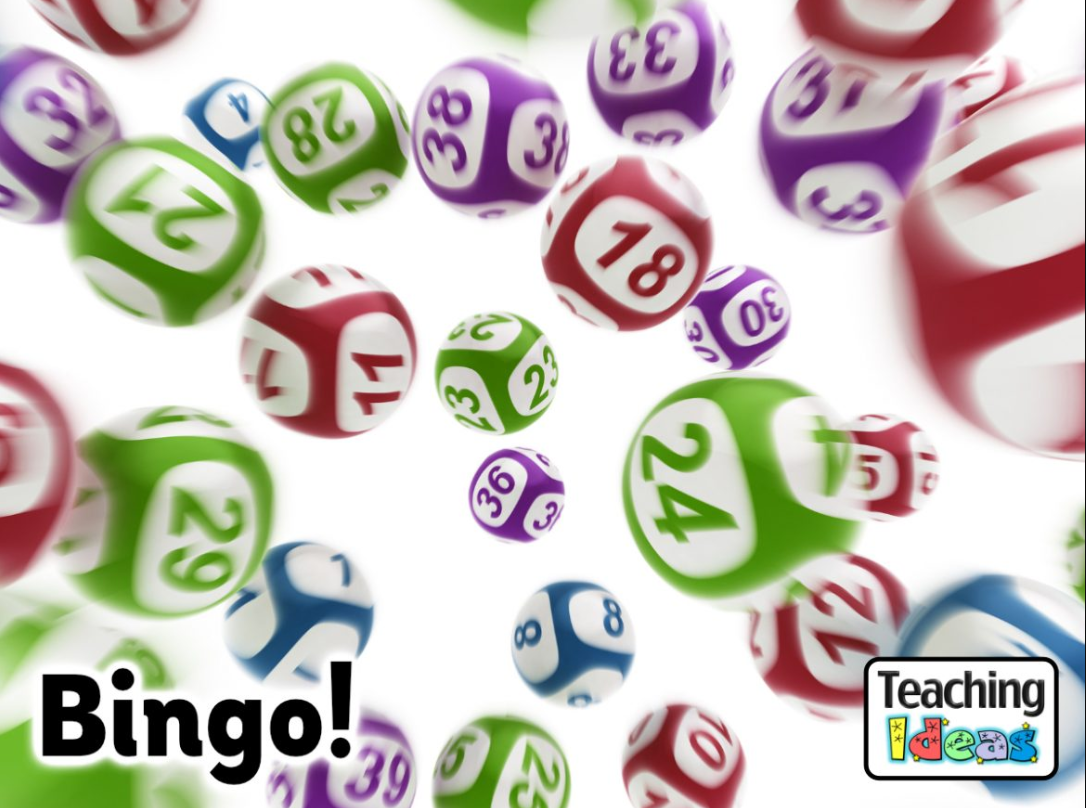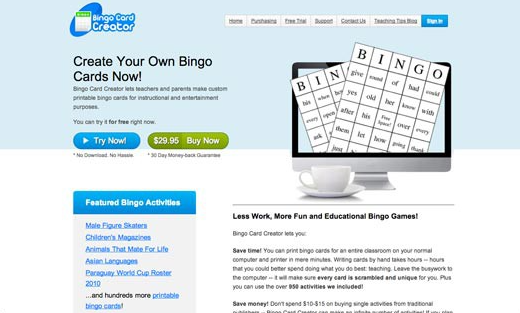To make your bingo more educational, integrate academic content such as math problems, historical facts, or vocabulary words into the bingo cards. Encourage collaborative learning and critical thinking through the gameplay.
Getting Started
Understanding Your Audience
Before delving into the fascinating world of educational bingo, it is crucial to comprehend the preferences and learning styles of your target audience. Are they visual learners or do they prefer auditory learning? Understanding this will pave the way for a bingo game that is both fun and educational. You might want to delve into various educational theories, such as Gardner’s theory of multiple intelligences, to better grasp the diverse learning styles and preferences of your audience.
Setting Clear Learning Objectives
Now that you have understood your audience, it’s time to set clear and achievable learning objectives for your educational bingo game. Are you aiming to enhance vocabulary, or foster a deeper understanding of historical events? Setting clear objectives will act as a roadmap in the development of your game. You might find the SMART criteria useful in establishing goals that are Specific, Measurable, Achievable, Relevant, and Time-bound.

Choosing a Relevant Subject Matter
Finally, before you start crafting your bingo cards, it is vital to choose a subject matter that is both relevant and interesting to your audience. Be it science, literature, or math; make sure it aligns well with the learning objectives you have set. You can refer to the educational guidelines and standards available for various subjects to ensure the relevancy and adequacy of the chosen subject matter.
With your audience understood, learning objectives set, and subject matter chosen, you are now ready to move onto the exciting phase of designing your educational bingo cards. Let’s forge ahead to create a bingo game that is not only enjoyable but also a rich learning experience.
Designing Educational Bingo Cards
Leveraging Educational Concepts in Bingo
Incorporating educational concepts into your bingo game is your next step. This process could involve integrating core principles from subjects such as math or science into your bingo cards. For instance, leveraging geometric shapes or scientific terms can enrich the educational value of the game. It’s pivotal to weave in well-researched and authentic information from reliable sources, perhaps making use of educational platforms and encyclopedias to ensure accuracy.
Creating Bingo Cards with Vocabulary Words
Transitioning to the linguistic domain, vocabulary bingo is a fantastic initiative. Here, you can curate a list of vocabulary words pertinent to the learning objectives previously set. Utilizing words that cater to various proficiency levels ensures inclusivity. Consider harnessing the potential of thesauruses to find synonyms and antonyms, creating a rich vocabulary pool to draw from for your bingo cards.

Incorporating Math Problems in Bingo Cards
To further the educational journey, infusing your bingo cards with math problems is an excellent choice. This could involve a range of mathematical concepts, from basic arithmetic to more advanced problems involving algebra or geometry. Crafting problems that encourage participants to think critically and problem-solve can be incredibly beneficial. You might find inspiration in educational mathematics resources available online.
Using Historical Dates and Events
Last but certainly not least, it’s time to take a historical turn. Including historical dates and events in your bingo cards can provide a fascinating learning avenue. This could involve major global events or focus on specific regional histories. It is encouraged to delve into credible historical archives to fetch accurate data and facts for your bingo cards, promoting not just fun but informed learning.
With the bingo cards laden with rich educational content, you are on the right track to create a game that is as enlightening as it is exciting. With the foundation set, we move forward to establish the rules and gameplay, ensuring a seamless and engaging educational bingo experience. Let’s forge ahead to sculpt a game that is both enjoyable and fosters learning.
Rules and Gameplay
Establishing Rules for Educational Bingo
Taking the first step into crafting the gameplay experience, establishing clear and concise rules is pivotal. These rules could dictate the ways to win, the format of the game, and how to fairly arbitrate disputes that may arise during the game. Moreover, highlighting the educational objectives within the rules can subtly encourage learning; for instance, asking participants to explain the historical significance of a date they’ve marked on their card can foster deeper engagement with the material. To formulate effective rules, familiarize yourself with various educational pedagogies to create a structure that promotes learning while retaining the fun essence of bingo.
Integrating Learning into the Gameplay
Next on your agenda should be the seamless integration of learning elements into the gameplay. This could involve creating rounds where players need to solve a math problem before they can mark a number or requiring them to use a newly-learned vocabulary word in a sentence. Additionally, you can introduce a discussion segment where players debate on a historical event, thus fostering a rich learning environment. Integrating learning into gameplay not only enhances the educational quotient but also adds an exciting dynamic to the traditional bingo game. It’s prudent to draw inspiration from successful educational games to understand how learning can be effectively woven into gameplay.

Enhancing Engagement Through Competitive Elements
Lastly, to spike the engagement level, introducing competitive elements such as timed rounds, challenges, and rewards can work wonders. Creating a leaderboard or offering educational rewards such as books or educational toys can foster a competitive spirit. Moreover, encouraging friendly competition can enhance engagement and create a vibrant learning atmosphere. Consider consulting educational psychologists or resources to understand how to strike the right balance between competition and learning.
With the rules clearly established and a gameplay structure that promotes learning meticulously crafted, you are all set to create an educational bingo game that is both engaging and enriching. It’s time to turn our attention to the multimedia elements that can take your educational bingo to the next level, by adding a visual and auditory dimension to the learning experience. Let’s continue to evolve the game, ensuring it is vibrant, dynamic, and fosters a rich learning environment.
Incorporating Multimedia Elements
Using Images and Symbols
As we venture into the realm of multimedia, it’s crucial to leverage images and symbols to enhance the educational bingo experience. Including pictures that represent historical events or scientific concepts can foster a deeper understanding and engagement. For instance, using images of famous artworks or symbols representing mathematical concepts can add a rich visual layer to the game. Drawing from a variety of visual learning resources can assist in selecting imagery that not only captivates but educates. You might create rounds where players have to identify a concept or event through pictures, nurturing their visual associative learning skills while adding a vibrant flair to the game.
Incorporating Audio Clues
Diving deeper, integrating audio clues can cater to auditory learners effectively. Imagine the thrill of recognizing a historical speech or the sounds of nature representing different geographical locations. Leveraging famous speeches, literary readings, or even musical pieces can add an auditory dimension that enriches the learning experience. It is wise to explore the archives of educational podcasts and audiobooks to find appropriate audio materials. Creating rounds that are solely based on audio clues can bring a refreshing change of pace and a dynamic auditory layer to your educational bingo game.

Leveraging Video Elements for an Interactive Experience
To take the multimedia experience a notch higher, the incorporation of video elements is your next step. Videos can range from short clips explaining a scientific phenomenon to historical footage bringing a past event to life. Leveraging video resources can make the learning process more interactive and visually appealing, facilitating a deeper understanding of complex subjects. Consider utilizing educational platforms and video resources to find content that can stimulate curiosity and foster learning while providing an interactive experience.
With multimedia elements skillfully incorporated, you have crafted an educational bingo experience that appeals to various learning styles, offering a rich, dynamic, and multi-faceted approach to learning. It’s not just about marking squares on a bingo card; it’s about creating a vivid tapestry of learning through images, sounds, and visuals. As we forge ahead, we will focus on making the bingo game even more interactive, encouraging group discussions and collaborative learning, and ensuring a wholesome and enriching learning environment. Let’s keep evolving the educational bingo experience to foster a deeper level of engagement and learning.
Making Bingo Interactive
Encouraging Group Discussions
As we aim to foster a collaborative learning environment, encouraging group discussions stands as a pivotal point in your bingo game blueprint. Here, you might introduce rounds where players discuss a topic derived from the bingo card before proceeding, possibly engaging in heated discussions on historical events or brainstorming solutions to a math problem together. It’s a golden opportunity to leverage educational theories such as constructivist theory, encouraging players to build knowledge through discussion and collaboration. Introducing a segment where players reflect on what they have learned can foster a deeper understanding and appreciation of the topics at hand.
Facilitating Collaborative Learning
Building upon the foundation of group discussions, facilitating collaborative learning takes the interactive bingo experience to new heights. Here, players can work in teams, perhaps collaborating to solve a complex problem or to come up with a creative story using the vocabulary words from the bingo card. Drawing insights from collaborative learning strategies can aid in crafting rounds that nurture teamwork and collective problem-solving. You might create scenarios where players have to collaborate to move forward, fostering a spirit of unity and shared learning experiences.

Promoting Critical Thinking Through Bingo
Lastly, carving out a niche for critical thinking within your bingo game can elevate the learning journey substantially. Here, players might encounter squares on their bingo cards that prompt them to think critically about a topic, possibly analyzing a historical event’s cause and effect or reasoning through a scientific concept. Encourage players to not just find the answer but to delve deeper, asking “why” and “how.” Drawing from critical thinking exercises can be a treasure trove of inspiration, fostering a mindset of inquiry and analysis as players navigate their way through the bingo game.
With the added layers of interactive discussions, collaborative learning, and critical thinking, your educational bingo game is transforming into a dynamic learning hub, pulsating with vibrant discussions and rich learning experiences. As players learn not just from the game but from each other, a nurturing and enriching learning environment unfolds, fostering a community of learners eager to delve deeper and learn more. The journey does not end here, as we move forward to gauge the learning outcomes and fine-tune the educational bingo experience, nurturing an ecosystem of learning that is both rewarding and enriching. Let’s take another step forward in this journey of crafting an educational masterpiece.
Assessing Learning Outcomes
Developing Assessment Criteria
As we venture deeper into the conceptual framework of your educational bingo, developing a robust assessment criteria stands paramount. This should encompass defining clear benchmarks that help in measuring the learning outcomes effectively. Whether it’s through quizzes that test the knowledge gained during the game or through reflective discussions where players articulate what they’ve learned, establishing this criteria is pivotal. Delving into the realm of educational assessment tools can offer a treasure trove of resources and insights to craft a comprehensive assessment plan. It would be beneficial to establish a rubric, detailing the learning objectives and the criteria to meet them, facilitating a structured assessment of the educational outcomes.
Gathering Feedback from Players
The next critical facet is gathering feedback from players, an element that imbues your game with a continual improvement spirit. Encouraging players to share their experiences, insights, and suggestions not only fosters a participatory environment but also offers valuable insights to enhance the game further. Utilizing feedback tools like surveys or open discussions can aid in collecting nuanced feedback, helping you to fine-tune the gameplay and educational content as per the players’ preferences and learning experiences.

Analyzing the Educational Impact
Lastly, undertaking a meticulous analysis of the educational impact would be your final stride in this segment. It involves studying the outcomes of the assessments and feedback to gauge the depth of learning achieved through the game. Did the players enhance their vocabulary? Did they acquire a deeper understanding of historical events? It’s a period of reflection where you correlate the learning objectives set initially with the outcomes achieved, paving the way for a data-driven understanding of the educational impact. Drawing upon educational research methodologies can guide you in structuring an analysis that is both comprehensive and insightful, offering a clear picture of the learning journey undertaken through the bingo game.
With a comprehensive framework to assess the learning outcomes meticulously crafted, you stand at a juncture where the educational bingo game is not just a game, but a vibrant educational tool, pulsating with learning opportunities at every juncture. As we forge ahead, we will encapsulate this rich journey, weaving a conclusion that not only recaps this enlightening journey but also explores the exciting potential future trends in educational bingo, offering a glimpse into the vibrant future awaiting this educational endeavor. Let’s proceed to encapsulate this journey, carving a roadmap for a future replete with learning and exploration.
Conclusion
Recap of the Educational Bingo Journey
As we draw towards the conclusion of our educational bingo manual, it is pivotal to encapsulate the rich journey we have undertaken. Here, we will retrace the path meticulously crafted, revisiting the thoughtful planning, the dynamic and immersive gameplay elements, and the meticulous incorporation of multimedia and interactive discussions. Highlighting the pivotal learning objectives achieved and the vibrant discussions fostered would be key. By revisiting the essence of this enriching endeavor, we weave a narrative that not only celebrates the vibrant learning ecosystem cultivated but also paves the way for future explorations, encouraging educators to delve deeper into the dynamic world of educational bingo, leveraging the treasure trove of resources and educational theories to foster an enriching learning environment.
Future Trends in Educational Bingo
Looking forward, it is exciting to envisage the trends that could define the future landscape of educational bingo. Here, we could explore the integration of emerging technologies such as augmented reality, offering a 3D learning experience or utilizing machine learning to personalize the learning journey. Engaging with educational technology trends could offer a glimpse into the innovations waiting to be explored, fostering a bingo game that is not just dynamic but evolutionary, adapting to the needs and preferences of the learners, offering a personalized and immersive learning journey. Envisioning a landscape replete with interactive and dynamic learning tools would pave the way for a bright future, nurturing a learning environment that is both innovative and enriching.

Closing Remarks
As we stand on the threshold of exciting possibilities, it is time to offer closing remarks that not only encapsulate the enriching journey undertaken but also ignite a spark of curiosity and enthusiasm to explore further. Encouraging educators to take the leap, to innovate, and to continually evolve would be the cornerstone of this segment. Here, we will reiterate the vibrant potential of educational bingo as a tool for fostering a rich and dynamic learning ecosystem, encouraging players to not just play but to learn, explore, and grow together. Drawing inspiration from various educational philosophies, this final note would stand as a beacon, encouraging a continual journey of exploration and learning, nurturing a vibrant and dynamic educational landscape through the immersive world of educational bingo.
As we conclude this guide, we foster a spirit of exploration and innovation, encouraging educators to delve deeper into the enriching world of educational bingo, creating experiences that are not just entertaining but educational, fostering a learning environment that is both vibrant and enriching. Let us stand at the cusp of a vibrant learning revolution, embracing the dynamic world of educational bingo, nurturing a future replete with learning and exploration.